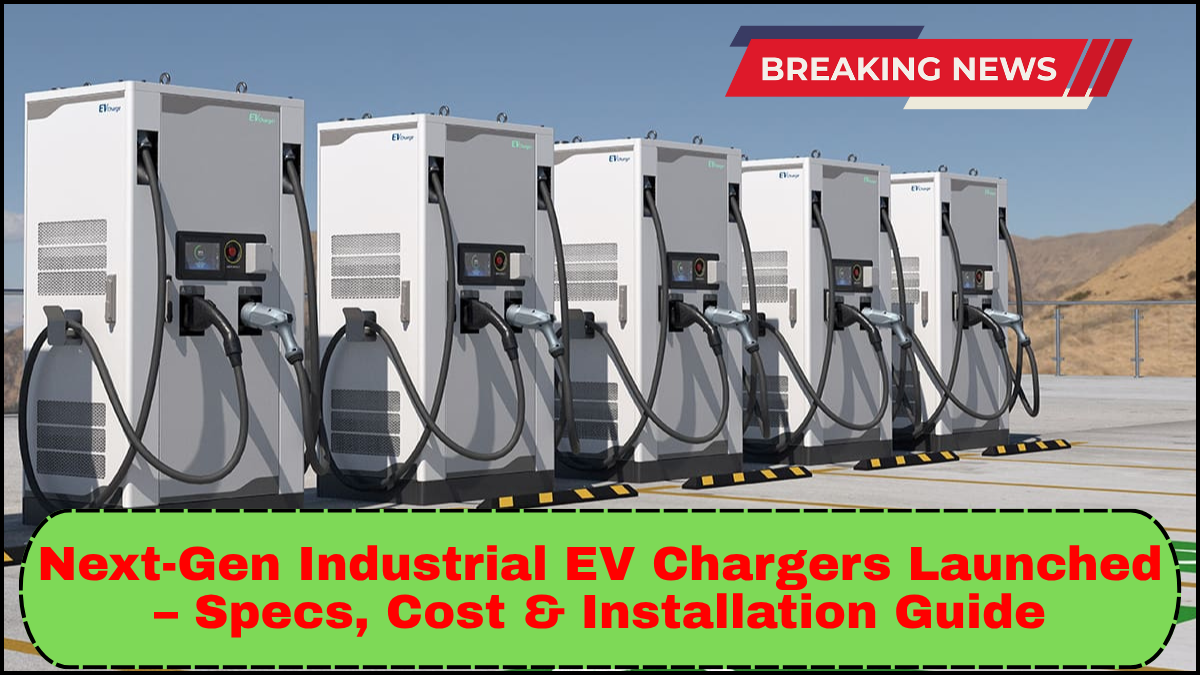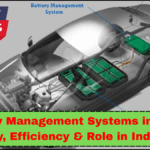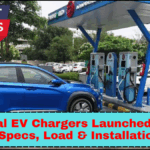The electric vehicle (EV) revolution isn’t just for consumers anymore. With the rapid electrification of logistics fleets, manufacturing plants, and commercial operations, industrial EV chargers are becoming essential to modern factory setup and operations. The recent launch of next-generation industrial EV chargers promises to reshape how businesses manage energy infrastructure, reduce operational costs, and meet sustainability goals.

Advanced Specifications That Raise the Bar
The new generation of industrial EV chargers comes equipped with cutting-edge technology tailored for high-demand environments. These aren’t your typical wall-mounted residential units. They’re engineered to handle continuous, high-capacity charging with the following key specs:
- Power Output: Up to 350 kW per charging point, capable of rapid charging even the heaviest-duty electric trucks and machinery.
- Smart Load Management: Real-time power distribution across multiple vehicles to prevent grid overload.
- Connectivity: 5G-enabled modules with integrated IoT sensors for performance tracking and predictive maintenance.
- Multi-Standard Support: Compatible with CCS, CHAdeMO, and future-proofed for emerging protocols.
- Rugged Design: Weather-sealed enclosures rated for outdoor industrial use (IP65+), resistant to dust, moisture, and temperature extremes.
These chargers are designed for scalability, allowing integration into existing power systems with minimal retrofitting.
Cost Breakdown: What to Expect
Pricing varies based on configuration, but here’s a general breakdown:
- Hardware Cost: Ranges from $25,000 to $75,000 per charger depending on output capacity and smart features.
- Installation: Between $10,000 and $30,000, depending on site readiness, electrical infrastructure, and permitting.
- Software & Maintenance: Annual subscription fees for smart management platforms run between $1,000 and $5,000, including updates, diagnostics, and analytics tools.
While the upfront investment may seem high, the return on investment (ROI) becomes evident when accounting for reduced fuel costs, lower maintenance on EV fleets, and potential tax incentives.
Installation Guide: From Planning to Power-On
Installing industrial EV chargers is a multi-step process that requires careful coordination across engineering, electrical, and regulatory teams. Here’s a simplified guide:
1. Site Assessment
Evaluate the existing electrical infrastructure. Confirm transformer capacity, panel space, and potential upgrade needs.
2. Permits and Compliance
Secure all local permits and ensure compliance with national electrical codes and environmental regulations.
3. Charger Selection
Choose models based on vehicle types, usage patterns, and peak charging needs. Consider smart chargers for long-term scalability.
4. Installation & Wiring
Certified electricians install the units, integrate them into the power grid, and set up safety disconnects and surge protection.
5. Testing & Commissioning
Conduct full-system tests, software onboarding, and user training. Monitor energy draw and set thresholds in smart load management.
6. Ongoing Support
Routine diagnostics, firmware updates, and system analytics are vital to maintain efficiency and uptime.
Why Industrial EV Chargers Are Now Essential
The shift to electric logistics and autonomous transport systems means that charging isn’t optional—it’s critical infrastructure. For any modern factory setup, having dedicated, high-speed EV chargers is as essential as compressed air lines or network connectivity.
Moreover, integrating these chargers with on-site renewable energy sources, like solar or wind, further amplifies savings and minimizes grid dependency. Companies in heavy industry, warehousing, and even agriculture are now viewing EV charger deployment as a core element of facility planning.
FAQs
Q1: How long does it take to fully charge a heavy-duty EV using an industrial charger?
A: Depending on the battery size and charger output, a full charge can take as little as 30 minutes with a 350 kW unit.
Q2: Can industrial EV chargers be integrated with renewable energy systems?
A: Yes. Many next-gen models include hybrid energy management features that work with solar panels or wind turbines.
Q3: Are there government incentives for installing industrial EV chargers?
A: Absolutely. Federal and state programs often offer tax credits, rebates, and grants to businesses installing EV infrastructure.
Q4: What safety features are built into these chargers?
A: Standard features include emergency shutoff, ground fault detection, temperature monitoring, and surge protection.
Q5: Is it possible to scale up the system as my EV fleet grows?
A: Yes. Modular architecture allows businesses to expand charging capacity without replacing existing units.
click here to learn more



